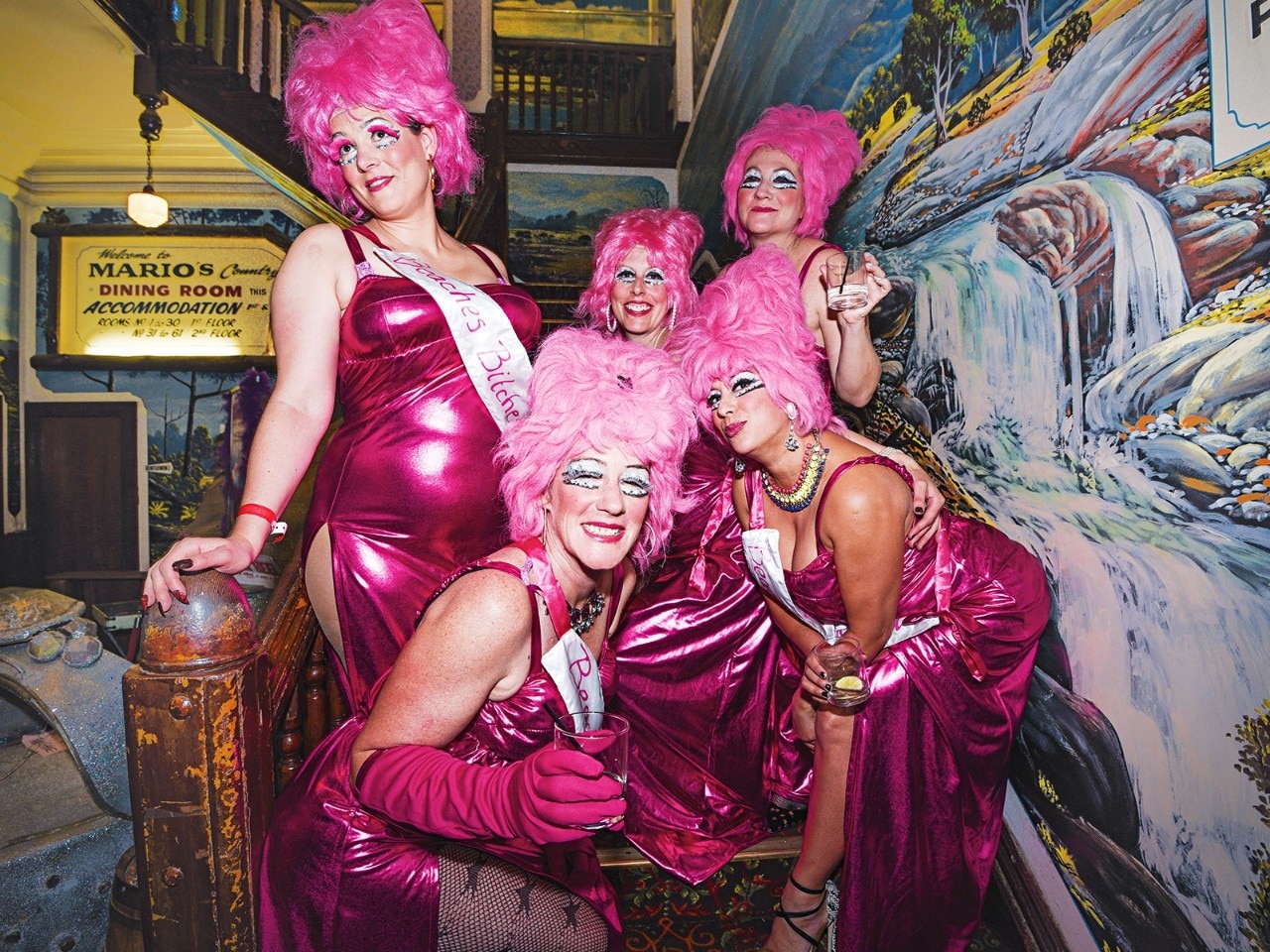The Mining Town That Digs Drag

Known for its harsh climate and hardy locals, Broken Hill also has a glamorous side: it’s the mining town that digs drag. By Jack Marx.
On the evening of 10 March 1951, a 38-year-old electrician named William Boothby led police on a spirited chase through the outback mining town of Broken Hill in NSW’s Far West. His crime was one for which he’d been nabbed twice before: dressing in women’s clothing. In court two days later, William was given a fine and dressing-down by the magistrate, who told him that if he was caught being so “obscene” again, he’d be sent to prison.
Those were black-and-white days in Broken Hill, a town that sprang into being after an exposed seam of lead, zinc and silver was discovered jutting out of the desert in 1883; at the time, it was the largest of its kind. Men toiled in the harsh environment and drank away the woes of the miner’s lot – in its heyday, Broken Hill boasted 71 pubs servicing a population of just over 30,000.

A tough community was pressure-cooked in the isolation of the desert. It was a man’s town, where union policies meant that most married women were barred from the workforce. Strangers from out of town were described as “from away” – a vast Golgotha outside the city’s frontiers, where life was ruled, as one civil leader proclaimed in 1944, by “neurotics, psychotics, homosexuals and people who do strange things”.
Movies shot in Broken Hill have done nothing to dissolve its reputation as an outpost of intolerance in a changing world. The 1971 film Wake in Fright depicts a town that’s a colosseum of raw masculinity. Then there was 1994’s The Adventures of Priscilla, Queen of the Desert, in which three road-tripping drag artists get a chilly reception at a local pub.
Today, with its two remaining mines almost exhausted (and in the hands of Chinese and Japanese consortiums) and its 18 pubs struggling to coax the 19,000 locals in for a beer, Broken Hill is a relic of a bygone time. In 2015, the entire city was catalogued on the National Heritage List and, the following year, for the first time in history, Broken Hill elected a female mayor. Its future, they say, lies in tourism – those people “from away” who “do strange things”.

On the 21st anniversary of the release of Priscilla, the majestic Palace Hotel held a festival in honour of the time when Bernadette, Felicia and Mitzi passed through. Drag queens from the capital cities performed beside the Priscilla stage musical’s famous bus, which was given to the Broken Hill City Council. The party spilled onto the streets and the locals came out to see.
“I think some people might have been wary at first,” says mayor Darriea Turley of the first Broken Heel Festival. “Now the locals see it as a lot of fun and they really get involved. It’s great for Broken Hill – it shows how much we’ve changed.” Now in its third year and growing, the festival is one of the most colourful events on the local calendar (7 to 9 September 2018). A dedicated train, The Silver City Stiletto, ferries drag queens and supporters from Sydney to the outback for three days of performances, pageantry and such oddities as “drag bingo”, in which old-timers do battle with cross-dressers as outrageously dollied-up hosts call the numbers through a string of lurid double entendres. But the highlight is the grand parade along Argent Street, a flamboyant procession of men dressed in women’s clothing.
“They say this sort of thing used to happen underground in Broken Hill,” says Turley. “Well, not anymore.”
William Boothby, one thinks, would have dug it.
WHERE Broken Hill, NSW
TRADITIONAL OWNERS Barkandji people
POPULATION 19,000
ESTABLISHED 1888
BILLED AS The Silver City
SEE ALSO: Australia's Lesser-Known Weekend Escapes


